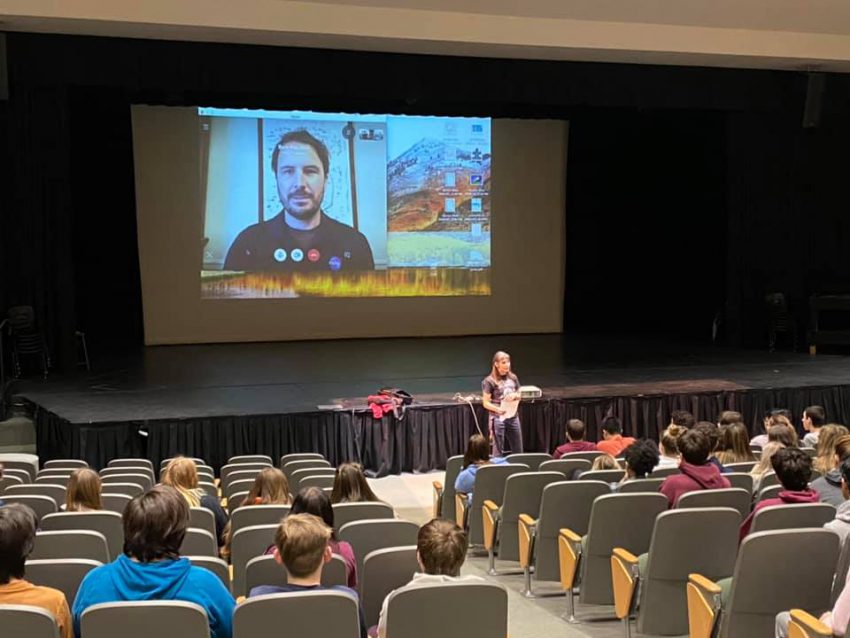It was an exciting day for students in the “Near Space Program” at West Ferris Intermediate and Secondary School.
Dr. Ben Poulter, an environmental researcher at NASA’s Goddard Space Flight Center in Greenbelt Maryland, conducted a lecture via video chat to the students in the school auditorium.
“He works in sensing CO2 in the atmosphere and its impact on the globe in the terms of climate change,” explained Kelly Shulman, a teacher at the school.
Shulman travelled to NASA in early October to discuss with them her students’ previous launch of a stratospheric balloon in May. It was there that she made contact with Dr. Poulter.
“It was an incredible experience of course because it was NASA,” Shulman said. “When I did go to NASA, I was kind of hoping that something would inspire our goal for our next mission. It’s hard to come up with these ideas. There has to be something more than taking a video.”
“I was absolutely thrilled when Dr. Poulter suggested this idea to me,” she continued. “I must say, the idea has become more and more exciting the deeper we get into it. There is real value the West Ferris data will have for NASA.”
The idea that was brought up to Shulman by Poulter is to conduct a “coincident measurement of atmospheric CO2.”
“NASA uses remote sensing techniques in order to figure out how much CO2 is in the atmosphere,” Shulman explains. “So they get a two-dimensional picture of infrared waves coming from the photosynthesis of plants. They don’t really have a vertical component, but our balloon does.”
“We’re going coordinate our balloon launch with an overpass of one of the NASA satellites that measures CO2 in this way,” she continued. “That way they will have their data, and correlate it with our vertical data. They will be using our data to verify whether or not their model is valid.”
As for the students, Shulman says this is a good experience for them to learn as much as they can before the launch of the balloon in the spring.
“I think, as with me, you slowly start to evolve an understanding of how big what you’re about to do, is,” Shulman said. “I think as time has gone on, we have gotten more and more excited about the level of involvement we have with NASA.”
“For example, the Carbon Observatory – 3 is a device on the International Space Station,” Shulman added. “Typically when you are doing these underpasses is pointed straight down from the satellite, but this can point at an entire region. Dr. Poulter connected us with the scientists who are in charge of that so when we do our launch, they will point it at North Bay and it allows us more days where we can get a measurement.”
As for launch day, Shulman says it can happen anytime between May 1 and June 20 depending on the weather.


